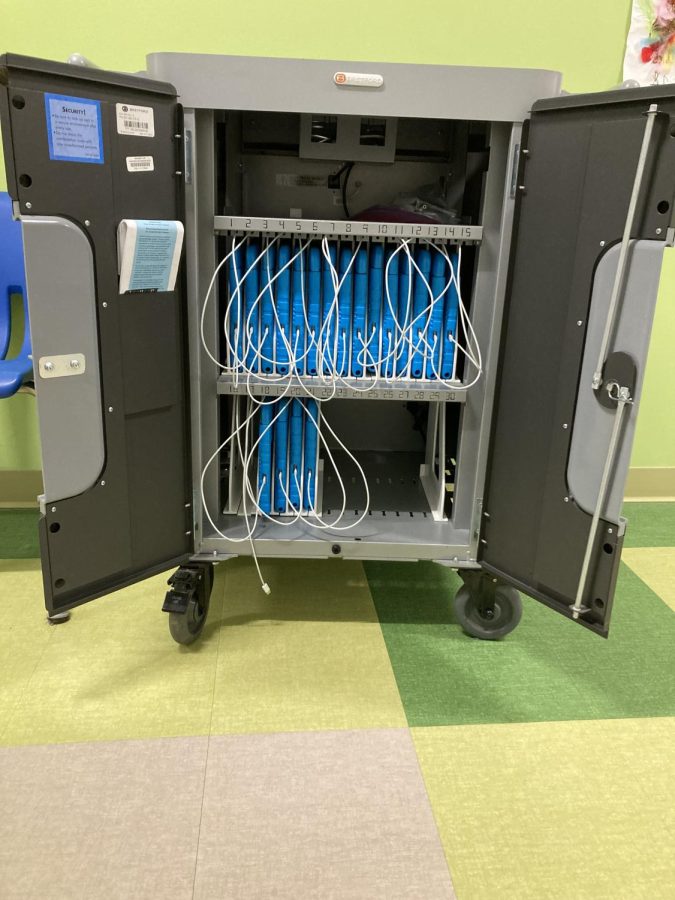Teaching Through Tech
November 23, 2022
As we emerge from COVID-19 and living life through a screen, we can take a step back and examine whether the increased use of technology during the pandemic has had a lasting effect on our learning environment.
There was a general consensus at the beginning of the pandemic that school would never be the same. Many parents, teachers, and students assumed that school would have more online programs. To an extent, this is true: Zoom meetings are still in use for administrators, Google Classroom is still how many students keep track of assignments, and some labs and demonstrations in class are completed online. However, unlike what many would have suspected, tech hasn’t taken over the classroom. Instead, teachers have found ways to balance the use of computers with hand-written assignments and in-class activities. As Ms. Royal, an English teacher at HHS, said, being isolated has only made people “realize the value of connecting with someone face-to-face.”
Many teachers share a philosophy when it comes to how much technology should be used in schools: although technology should enhance learning and add to what’s being taught, it shouldn’t completely take over. The ideal classroom for some incorporates tech in a way that finds a healthy balance by using it as one of many tools for learning. Technology provides many more opportunities for students to grasp what they’re learning. Online programs offer ways for students to connect and collaborate with people around the world, interact with their lessons to make them dynamic and visual, and overall have access to much more information than in years past.
The increase in technology hasn’t solely impacted classrooms, though; it has also made school more accessible to parents. Attendance at online school meetings is now higher, and it’s easier for a working parent to meet with their child’s teacher.
Yet, teachers have noticed that all of this technology comes at a cost. Student writing has lost quality as students’ array of vocabulary has decreased, while the use of abbreviations has increased. Dr. Stephens, the head of the Math Department at HHS, said in an interview that we, as a society, we “don’t have the same traction with ideas, depth of knowledge, that we did before.” Students aren’t fully to blame for this, though. Stephens continued that during Covid, “We were in a low accountability environment,” and there was less of an emphasis on the quality of student work “and more of a push for engagement and participation.”
But maybe some of the skills in which there was a decline, like handwriting, aren’t really something to worry about. Mr. Ralston, a history teacher at HHS, thinks that “maybe those skills aren’t compatible with the 21st century.”
Now that technology is such a large part of school, what will this look like in the future? As new technology is constantly being introduced — and with it new ways for people to learn — classrooms may look drastically different even five years in the future. Teachers have varying perspectives on this. Some, like Mr. Adipietro, the principal at HHS, don’t really think that the use of tech in school will change much in the coming years, saying, “I don’t see a drastic change in how schools use technology. I think the change will be from the outside world.” Mr. Ralston thinks differently: “The world is changing so much, and technology is driving so much of that change, it’s impossible to think that [this] won’t impact schools, since it will impact everybody.”


















